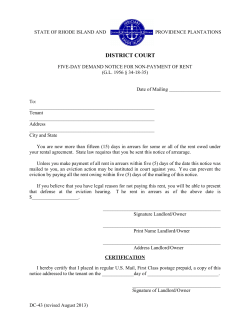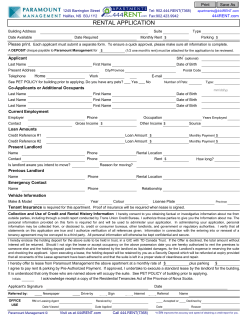
Learn to Lead - Leavenworth Climbing Equipment List
Learn to Lead - Leavenworth Climbing Equipment List The rock climbing area of Leavenworth is located in the Pacific Northwest. Leavenworth is situated just to the east of the Cascade Crest and lie in the rain shadow of the mountains. There is quite a bit of temperature variation between summer and winter and far less precipitation than the western side of the mountains. Leavenworth is often quite warm in mid-summer and the climbing season begins about a month earlier and ends about a month later than areas on the west side of the range. Rain is less common here although the range of temperatures the climber might encounter here is much greater. A typical day in May or September might begin cool and pleasant, warm to the lower 70's by afternoon, and drop to a night-time low between 40-50°F. Though it is possible for program participants to lodge in hotels near any of the climbing sites, we recommend that you car camp in more convenient sites closer to the rock climbing areas. Not only is this generally more enjoyable and economical, but it allows for more efficient use of our limited time. If you decide to stay in a hotel you need not bring any of the items listed under the "Camping Equipment" heading. Food can be purchased in nearby grocery stores before (or during) the course. At AAI we take equipment and its selection seriously. Our Equipment Services department is expertly staffed by climbers, skiers and guides. Additionally, we only carry products in our store have been thoroughly field tested and approved by our guides. This intensive process ensures that all equipment that you purchase from AAI is best suited to your course and future mountain adventures. Please contact us to select equipment for your course. If you decide to rent equipment from us, you can rent climbing shoes, harness, and helmet as a package for $10 per day. If you do decide to rent, please notify us of your waist and shoe sizes so that we can reserve your gear in advance. Questions on gear may be directed to our equipment staff at the AAI gear shop, (360) 671-1570, Monday - Friday, 10:00am to 6:00pm. We’ll be happy to help you with all your gear questions! Clothing & Footwear T-shirt: Light colors are best. This shirt can be synthetic or cotton, though cotton is excellent for summer climbing due to its wicking properties. Long sleeved shirts are nice on cool days, while short sleeve shirts are great for when it’s hot. Weight: 3 - 7 oz / 85 - 200 grams Materials: Synthetic, cotton, blends. Own Buy ! ! Base Layer Top: These are used mainly in the evening or on colder days climbing. This will be your primary layer and should be “lightweight” or “silk weight” synthetic or wool. Weight: 5 - 8 oz / 140 - 225 grams Materials: Synthetic, wool. Own Buy ! ! Undergarments: Most climbers wear undergarments underneath their base layer. Materials: Synthetic, wool Own Buy ! ! Shorts: Lightweight shorts are nice for warm days. Weight: 4 - 8oz / 110 - 227 grams Own Buy ! ! Wind Shell: Lightweight water repellent nylon recommended. This is often worn while climbing, so keep it light and simple. No waterproof coated nylon, please. If you cannot find a lightweight wind shell, a GoreTex rain jacket can be substituted, but remember, a jacket is heavier, bulkier and does not allow as good freedom of movement as a wind shell. Weight: 13 - 16oz / 368-454 grams Materials: Nylon, micro weave fabrics, fleece, wind stopper Own Buy ! ! Comfortable Walking Shoes: Running shoes or lightweight approach shoes are preferred. Sandals, “Crocs,” or flip-flops are not appropriate. Climbing Pants: Softshells, sweat pants, Lycra or other light comfortable pants that don’t restrict movement. Old synthetic dress pants also work. Rain Jacket: In the event of rain, a lightweight shell jacket will help protect you from the elements. Your jacket should be sized to comfortably fit over your other layers. Your hood should fit over your climbing helmet. Weight: 8 - 20oz / 227 – 566 grams Materials: eVent, Gore-tex, h2No, or similar Sun Hat: A baseball cap or visor serves well. Light Insulating Layer: The goal for this piece is to add warmth to your clothing layering system. The weight and design of this piece will vary based on the other items of clothing that you are bringing. A fleece jacket or sweatshirt is an example or this layer. Mid-winter dates should bring a heavier layer. Weight: 10 - 20oz / 283 – 566 grams Materials: fleece, Primaloft, down Own Buy ! ! Own Buy ! ! Own Buy ! ! Own Buy ! ! Own Buy ! ! Beanie Hat/Toque: Bring a thinner warm hat that will fit under your climbing helmet. Weight: 2 - 4oz / 56 – 112 grams Materials: fleece, wool, windstopper, or similar Own Buy ! ! Socks: Bring one pair per day. Materials: wool, synthetic, cotton Own Buy ! ! Climbing Equipment Climbing Harness: Choose a harness with adjustable leg loops, and make sure it fits your body well. A belay loop, gear loops, and light padding on the waist are desirable features. Weight: 6 - 16oz / 170 - 453 grams Own Buy Rent ! ! ! Climbing Helmet: Light weight, well ventilated, and comfortable. Models with a plastic shell are more durable, but are heavier than all foam models. Must be UIAA approved for climbing. Own Buy Rent ! ! ! Rock Shoes: Rock Shoes are recommended for the Introductory course and required for the Intermediate and Master’s courses. An all around rock shoe that performs well on both cracks and smearing is recommended. If you do not own them, you can rent them from AAI. Own Buy Rent ! ! ! Carabiners: Bring one locking carabiner, if you own one. Own Buy ! ! Athletic Tape: Optional. Bring one roll of 1 !” wide cloth athletic tape for taping hands for crack climbing. Available in athletic supply stores and climbing shops. Own Buy ! ! Chalk Bag and Chalk: Optional but highly recommended. Own Buy ! ! Belay Device: Bring one. A Black Diamond ATC-Guide or Petzl Reverso is required for Masters Courses where lead climbing is the objective. Own Buy ! ! Note: If you own a small free climbing rack, feel free to bring it along. Even though AAI supplies this equipment, most climbers feel more comfortable using gear with which they are familiar. Other Essentials Small, comfortable climbing pack: Used to get your equipment to the climbing area. Packs are usually left on the ground while climbing, but are carried when multipitch climbing. Find a model that fits well. Size Range: 28 – 35 liters / 1700 - 2100 cu in. Own Buy Rent ! ! ! Hydration: 3 liters of water capacity are the minimum. Hydration packs or bladders like the Camelback or Platypus with appropriate accessories are recommended. One water bottle, usually one-quart Nalgene type, is required. Other plastic bottles, similar in nature can work as well. Own Buy ! ! Lunch Food: You are responsible for planning your meals during your course. Look for lightweight, high energy and ‘snackable’ foods. Some days it is reasonable to take a lunch break, while prolonged breaks are often not feasible on multipitch climbing days. Please call our administrative office for additional guidance in the food planning process. Own Buy ! ! Personal Medical Kit: Please include prescriptions at a minimum. Own Buy ! ! Sunscreen: With a Sun Protection Factor (SPF) of at least 30. For the fair skinned, the higher the SPF the better. Dermatone produces an effective 1” diameter stick as well as a translucent zinc oxide lotion. Own Buy ! ! Sun Glasses: Choose a model with UVA/UVB protection. Keeper strings like “Croakies” are useful to prevent dropping your glasses while climbing. Headlamp: Required for multipitch climbing days. High output LED models are preferred over older halogen models. Flashlights are not acceptable. Camera: Optional. We recommend small point and shoot cameras that can easily be carried in an outside pocket or small case outside your pack. If you can’t comfortably and safely carry your camera outside your pack, even in bad weather, you’ll miss the best photo opportunities. Though some climbers bring them, SLR cameras are not recommended because of weight and bulk. Passport: Required for Squamish, BC courses. Own Buy ! ! Own Buy ! ! Own Buy ! ! Have ! Camping Equipment These items only need to be brought if you will be camping during your course. Tent: Any three-season tent is suitable. Own Buy Rent ! ! ! Sleeping Bag: Bring one that is rated to around 25°F. Weight: 16 – 42 oz / 453 – 1200 grams Materials: Down, Primaloft, Polarguard 3D Own Buy ! ! Sleeping Pad: One pad, preferably a lightweight inflatable model, is preferred. Closed cell foam pads are fine, but are not as comfortable. Bring a patch kit for inflatable pads. Own Buy ! ! Lighter: Be advised, lighters are no longer acceptable in checked baggage when flying. Own Buy ! ! Stove: Any small backpacking stove will do. Guides will have extra MSR fuel bottles if you fly and need to borrow one. You will need to provide fuel of course. Own Buy Rent ! ! ! **United Airlines has indicated that backpacking stoves with detachable fuel containers may be taken on board, but only the stove itself (the fuel container-new or used- MUST be left at home). The stove must be air dried of any fuel and be sent via checked baggage, not carry on. Further information on this regulation may be found by a United Airlines employee under Hazardous Materials: Camping equipment; footnote. Fuel: 3/4 liter is plenty. Fuel cannot be taken on airplanes. Own Buy ! ! Pots: One 1! - 2 quart pot is enough for one person. Two people sharing a stove might want to bring two pots if their meals are significantly different. Materials: Titanium, aluminum Own Buy ! ! Utensils: Large cup (~16oz) and spoon minimum. Most also bring a bowl. Own Buy ! !
© Copyright 2025





















